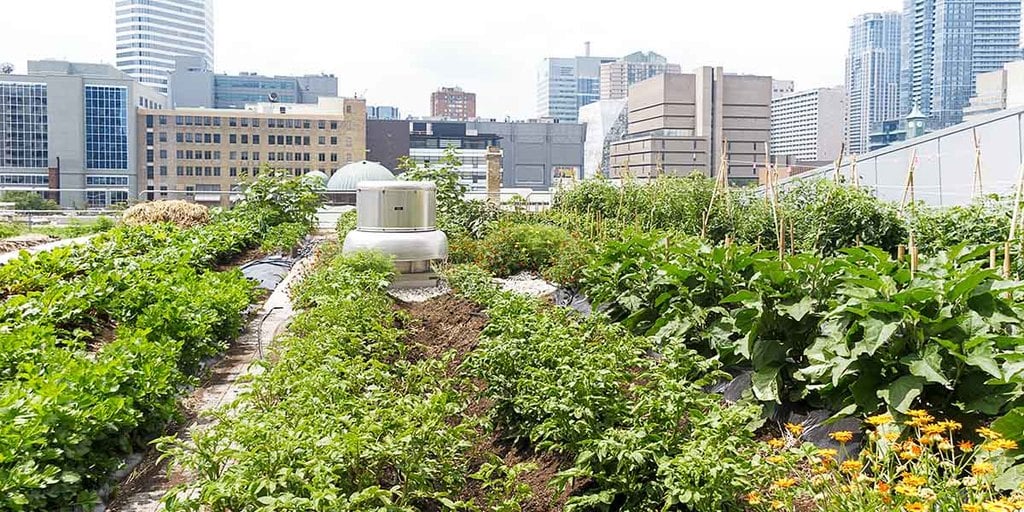Unknown Facts About City Blooming
Unknown Facts About City Blooming
Blog Article
What Does City Blooming Do?
Table of ContentsCity Blooming Things To Know Before You Get ThisFacts About City Blooming Revealed9 Simple Techniques For City BloomingHow City Blooming can Save You Time, Stress, and Money.The Single Strategy To Use For City Blooming
Intrigued in expanding food for sale in the City of Chicago? Below is a checklist of frequently asked inquiries concerning the guidelines and laws that cultivators ought to think about when intending a metropolitan agriculture project.
The zoning modification does not customize any type of other codes managing composting, structure licenses, purchasing or leasing City owned residential property, company licenses or environmental contamination. There are existing codes that regulate these problems and they continue to be completely effect and might apply to your project. Community gardens are commonly owned or handled by public entities, civic organizations or community-based companies and preserved by volunteers.
Urban ranches grow food that is planned to be sold, either on a nonprofit or for-profit basis. As a result of their commercial function, urban ranches need an organization certificate. Yes. A community yard is permitted to sell surplus create that was expanded on website if the sales are accessory or subordinate to the yard's main purpose explained over.
Not known Incorrect Statements About City Blooming
Composting is allowed but only for plant product that is generated and made use of on site. The quantity of compost product can not go beyond 25 cubic backyards at any type of provided time according to the requirements in 7-28-715 of the City's Municipal Code. Yes. Due to the fact that the dirt at many new garden websites needs changing, garden compost, dirt, wood chips, or other products can be gotten to build or enhance the growing room - balcony and patio garden design.

If a structure license is required then the hoophouse will certainly be considered an accessory structure. You can discover even more regarding the structure license requirements by calling the Division of Structures. The 25,000-square-foot size restriction is meant to avoid a solitary area yard from dominating an offered block or diminishing the block's existing domestic or business character.
The restriction does not relate to gardens located in Public Open Room (POS) areas. Can there be more than one neighborhood yard that is 25,000 square feet on a single block? Yes. The dimension restriction puts on specific gardens, not to individual blocks. No. Fence is not needed, nevertheless, yards that have huge car parking locations might be needed to install secure fencing or other landscaping attributes.
City Blooming - An Overview
B1 & B2 districts call for that all commercial use activities be performed inside. R areas limit business task. The guidelines show the purpose and intent of the Zoning Code. Is secure fencing required for metropolitan farms? Yes. Fencings may be needed, in addition to landscape design and screening, for sure parking lot and exterior job or storage areas depending upon area and the particular task taking location.
Urban farms call for structure licenses and zoning authorizations prior to building and construction (home and garden). Other forms of city testimonial may be called for depending on certain structures, activities, size, landscaping, licensing, public health and stormwater monitoring concerns.
The Department of Business Affairs and Consumer Defense can aid identify the particular type of service certificate that's required. Off street parking is required for the majority of commercial jobs in Chicago. The needed number of vehicle parking spaces is based on the number of employees working on site and not go to this site the square footage of the growing room.
City Blooming Can Be Fun For Anyone

An urban farm can offer compost material produced on website, nonetheless, the operation should abide with the policies in 7-28-715 of the Chicago Municipal Code. Aquaponic systems are enabled indoors on metropolitan ranches in lots of zoning areas.
As much as five hives or colonies of honey bees may be kept as an accessory use. Beekeepers should register with the Illinois Division of Farming. For additional information concerning the recommended zoning modification you might speak to the Division of Real Estate and Economic Advancement, Bureau of Planning and Zoning at 312.744.8563.
, which takes area in country areas at the edge of suburbs.
Getting My City Blooming To Work
It can entail a motion of organic cultivators, "foodies" and "locavores", that seek to form socials media based on a shared values of nature and neighborhood holism. These networks can develop by method of official institutional support, coming to be integrated into neighborhood community preparation as a "change town" activity for lasting metropolitan growth.
In either case, the more straight accessibility to fresh vegetable, fruit, and meat products that might be realised via metropolitan agriculture can improve food security and food safety while reducing food miles, causing reduced greenhouse gas emissions, thus adding to climate change reduction. Several of the initial evidence of city farming originates from Mesopotamia.
Report this page